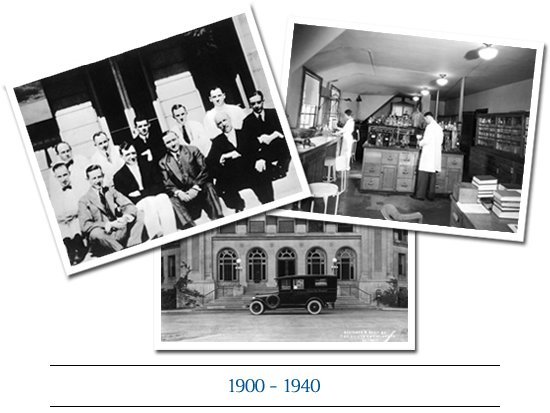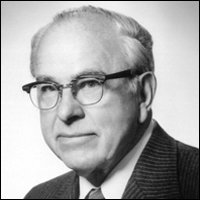The Beginning Years

The time was the early 1900s. The nation was in the midst of an industrial and manufacturing revolution, and Detroit was at the forefront -- led primarily by automotive pioneer Henry Ford.
After years of inventing motorized vehicles, Henry Ford founded Ford Motor Company in 1903. Within the first few months, Ford was selling the Model A and turning a profit. In 1908, the legendary Model T was born. It wasn't long before Ford Motor Company became an industrial giant that spanned the globe.
With the workforce at Ford and the population of Detroit rapidly growing, so too were the health care needs of the community. Henry Ford understood the importance of keeping a healthy and productive community, and he envisioned creating a hospital for the working man.
The year 1909 marked the beginning of a movement to establish a new hospital in Detroit. The Detroit General Hospital Association was organized to plan and build the Detroit General Hospital. With Henry Ford as chairman, the Finance Committee purchased twenty acres of land bound by West Grand Boulevard, Hamilton, Byron and Bethune Avenues. Plans of a pavilion type of hospital, drawn up after committees had studied the leading hospitals in Europe and America, were accepted and the work of building began.
In 1912 ground was broken for the first building unit. However, enthusiasm soon lagged and subscriptions were insufficient to carry the project through. The foundation of the building remained unfinished for eighteen months. In 1914, it was suggested that the City of Detroit take over the entire project.
Henry Ford objected and offered to repay subscribers and assume the outstanding debts and contracts for the buildings of the Detroit General Hospital. His offer was accepted immediately. On June 26, 1914, the present site of the Henry Ford Hospital was deeded to Henry and Clara Ford.

On September 8, 1915, the articles of incorporation for the Henry Ford Hospital were recorded. Five days later Henry Ford and his wife deeded the property to the Henry Ford Hospital, Incorporated. The first meeting of the incorporators was held September 21, 1915, and a board of trustees was elected with Henry Ford as president and his son Edsel as vice president.
On October 1, 1915, the first patients were admitted at Henry Ford Hospital. Although the Hospital interior was not yet completed, a long ward in the Private Patient Building accommodated 48 patients, and several other small buildings housed the surgical pavilion, research quarters, kitchens and laundry facilities, the power plant and garage. About 100 patients were admitted over the next 80 days or so.
Shortly after that, Henry Ford met Dr. William Mayo of the Mayo Clinic in Rochester, Minnesota. Ford was impressed by Mayo's description of new methods for hospital operations, including a closed staff of employed physicians who worked exclusively in and for the hospital. Henry Ford felt it was important to attract excellent staff members for the closed staff of his new hospital. Dr. Frank J. Sladen, a former resident physician at the Johns Hopkins Hospital who came to Detroit to serve as the chief of medical service for the Detroit General Hospital was appointed physician-in-chief. In 1916, Dr. Roy McClure -- a gifted young surgeon also from Johns Hopkins -- was recruited as the surgeon-in-chief.
Over the next two years, as plans were being made for the large hospital and staff, the war in Europe escalated. On April 6, 1917, President Woodrow Wilson and the U.S. Congress declared war on Germany and the country began to mobilize for the war effort. The first American troops arrived in France in June of 1917, and Henry Ford Hospital staff members were soon to join them.
As the hospital could not operate on its own, Henry Ford offered it to the U.S. government for use as an Army hospital for the duration of the war. The hospital was closed in the summer of 1918, and all remaining staff who could pass the military physical entered the service. A ceremony on October 26, 1918, marked the temporary transfer of the unfinished Henry Ford Hospital to the U.S. Army. For the next 11 months, Henry Ford Hospital would be known as the U.S. Army General Hospital No. 36.
After the war ended on November 11, 1918, hospital facilities were needed to care for the hundreds of wounded and ailing American soldiers as they returned home. By February 1919, the first patients were received at the hospital. Many patients required lengthy recuperation and therapy for recovery from their war injuries. No. 36 cared for 2,000 wounded soldiers without a single death during the 11 months of its existence.
By summer, the troops slowly vacated the premises, leaving a roughly used and tattered hospital shell behind. The hospital was returned to Henry Ford by the government on January 1, 1920, and the original staff returned from their army service and again opened the hospital. That same month, a second influenza epidemic arrived, and 300 emergency beds were made available for the city. Stricken patients flooded the hospital, all of them seriously ill and many of them dying. Almost 9,000 Detroiters fell victim to the infection.
With the war and the epidemic over, construction resumed on the hospital. On December 21, 1921, the 50,000-square-foot main hospital opened with a completely equipped diagnostic clinic, staff and 500-bed capacity. With four floors of private inpatient rooms and a six-story central unit, it offered the finest care and hospital surroundings available anywhere in the country.

Drs. Sladen and McClure had been trying to persuade Ford for several years to go forward with an addition of a nurses' school to the hospital, and in 1923 he suddenly agreed. The Clara Ford School of Nursing and Hygiene opened in 1925 with 300 rooms to house students. A new Education Building, connected to the home by a basement tunnel, contained classrooms, demonstration rooms, and lecture halls.
The growth and prosperity of the hospital was interrupted again in 1929 when the Stock Market crashed. On Tuesday, October 29, a national panic ensued. Banks, factories, stores and businesses failed in the course of that one day, and there followed over the next four years the deepest depression in U.S. history. In 1931, Henry Ford was forced to layoff 75,000 factory workers. The level of human suffering increased rapidly as families could no longer afford food or even shelter. While the hospital's census counts dropped dramatically during this time, the staff continued to assist patients who could not afford to pay.
Although the growth of the hospital was minimal during these years of economic hardship, it experienced a huge gain when Dr. Conrad R. Lam, a Texan who had trained at Yale, came to Henry Ford Hospital in 1932 for his internship and residency under Dr. McClure. Lam was appointed to the staff in 1938, and soon began to specialize in thoracic and cardiac surgery.
Photos: © Property of Henry Ford Health Conrad R. Lam Archives, All Rights Reserved
.svg?iar=0&hash=F6049510E33E4E6D8196C26CCC0A64A4)

/hfh-logo-main--white.svg?iar=0&hash=ED491CBFADFB7670FAE94559C98D7798)